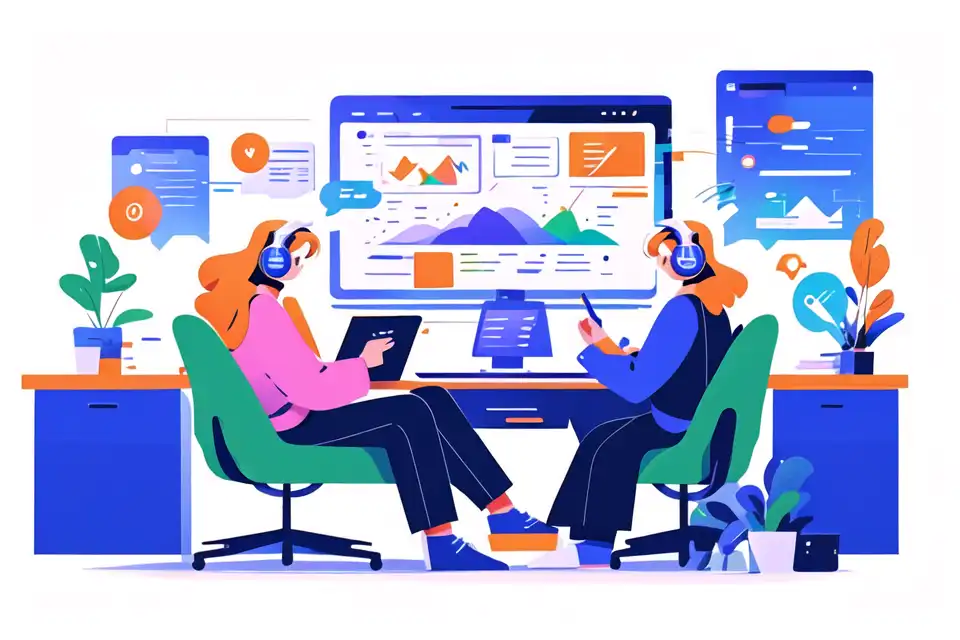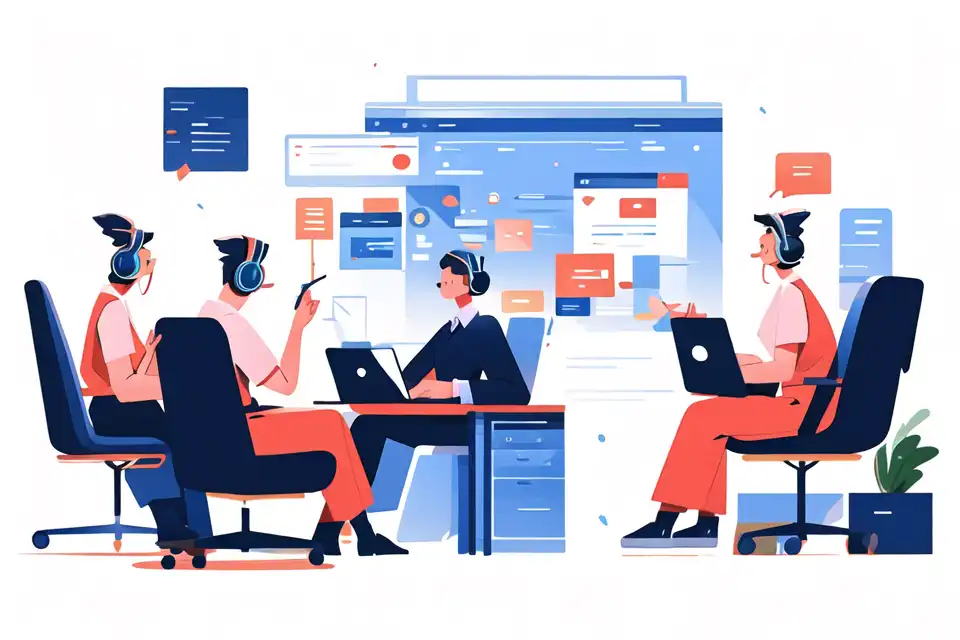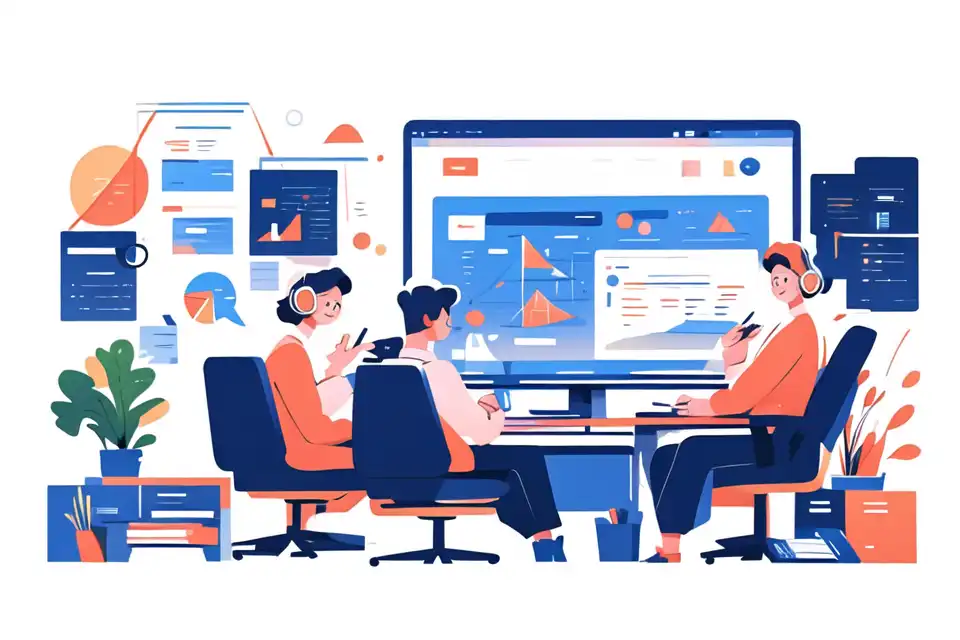Virtual Education Fairs
Learn about the top tips and strategies in virtual education fairs
Try Lark for Free
The education sector has witnessed a historic paradigm shift in recent years, with the rise of digital technology transforming traditional teaching methods. One revolution that has gained significant traction is the concept of virtual education fairs. These platforms offer a new way to learn, connect, and collaborate, all from the comfort of one's own home. But what exactly are virtual education fairs? How do they work? What benefits do they bring to the table? And how can educators incorporate them effectively into their curriculum? This comprehensive guide will delve into these key questions, providing educators with the information they need to leverage the full potential of virtual education fairs.
Unlock the power of Lark to elevate your business operations. Discover actionable strategies and best practices in our comprehensive guide.
The fundamentals of virtual education fairs
An Insight into Virtual Education Fairs
Virtual education fairs are digital platforms where learners can explore various educational resources, engage with experts, and participate in interactive learning activities. They mimic the environment of a physical education fair, but without the geographical constraints, providing learners with a more accessible and flexible learning opportunity.
The Rising Importance of Virtual Education Fairs
Virtual education fairs have become increasingly popular, especially amidst the global pandemic. According to a study by Grand View Research, the global virtual events market size was valued at USD 77.98 billion in 2019 and is expected to grow at a compound annual growth rate (CAGR) of 23.2% from 2020 to 2027. This growth is driven by the increasing digitization of the learning environment and the need for more flexible, accessible education solutions.
Advantages of virtual education fairs
Enhancing the Learning Experience
Virtual education fairs not only provide an innovative learning platform but also enhance the overall learning experience. They offer a flexible schedule, a wide range of resources, and the opportunity to interact with experts and peers from around the world.
Impact on Student Outcomes
By providing an engaging, interactive learning environment, virtual education fairs can significantly improve student outcomes. Studies have shown that students who participate in these fairs show higher engagement levels, better academic performance, and improved critical thinking skills.
Learn more about Lark can help you with everything mentioned so far in the article.
Incorporating virtual education fairs into education
Steps to Integrate Virtual Education Fairs
Incorporating virtual education fairs into the classroom can be a step-by-step process, starting with researching available platforms, planning the fair’s content, and preparing students and teachers for the digital experience.
Necessary Tools and Resources
Effective implementation of virtual education fairs requires the right tools and resources. Platforms like Lark, for instance, offer a range of features that can facilitate seamless communication and collaboration during the fair, including video conferencing, real-time messaging, and file sharing.
Real-life successes: virtual education fairs
Example 1: University of XYZ
The University of XYZ hosted a successful virtual education fair that attracted thousands of students from around the globe. The fair featured virtual booths, live webinars, and interactive Q&A sessions, demonstrating the potential of digital platforms in enhancing the learning experience.
Example 2: ABC High School
ABC High School leveraged a virtual education fair to introduce students to various career paths. The event featured professionals from various fields, interactive workshops, and a virtual networking session, providing students with valuable insights and experiences.
Example 3: DEF Community College
DEF Community College used a virtual education fair to showcase its programs and facilities to prospective students. Despite the challenges of transitioning to a digital platform, the fair was a resounding success, attracting a wider audience and generating positive feedback.
Learn more about Lark can help you with everything mentioned so far in the article.
Challenges and solutions in implementing virtual education fairs
Potential Obstacles
The shift to virtual education fairs can present various challenges, including technical difficulties, maintaining student engagement, and preparing teachers for the digital shift.
Overcoming Challenges
These obstacles can be addressed through proactive planning, adequate training, and by leveraging effective tools like Lark that offer robust features to facilitate online collaboration and communication.
The future of virtual education fairs
Emerging Trends
The future of virtual education fairs is promising, with evolving technology, innovative methodologies, and changing demographics reshaping the landscape.
Future Predictions
As technology advances and educational needs evolve, virtual education fairs will likely become an integral part of the learning experience, offering a flexible, accessible, and interactive platform for learners and educators alike.
Learn more about Lark can help you with everything mentioned so far in the article.
Conclusion
The emergence of virtual education fairs represents a significant shift in the education sector. By harnessing the power of these platforms, educators can create engaging, interactive, and accessible learning experiences that can significantly improve student outcomes.
Tips for conducting successful virtual education fairs
| Do's | Don'ts |
|---|---|
| Plan ahead | Rush the planning process |
| Train staff | Overlook the need for training |
| Leverage effective tools like Lark | Ignore the importance of reliable technology |
Related:
Education Solution | LarkLearn more about Lark can help you with everything mentioned so far in the article.
Unlock the power of Lark to elevate your business operations. Discover actionable strategies and best practices in our comprehensive guide.








